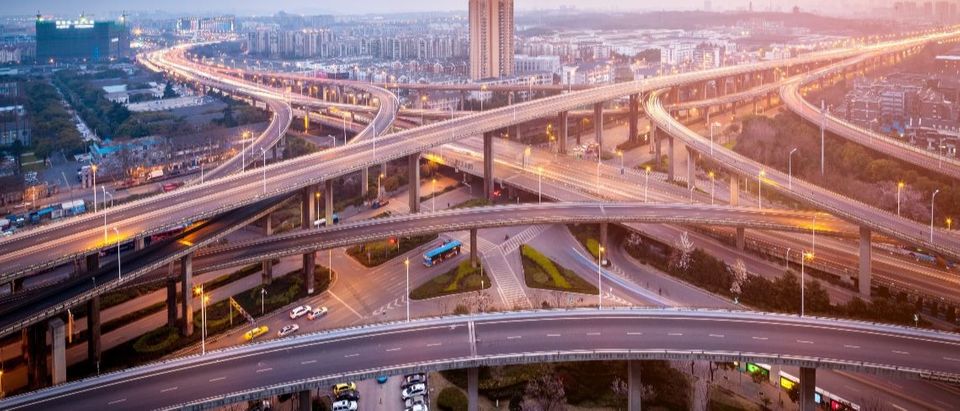For decades Washington’s answer to transportation infrastructure has been simple: Throw federal dollars at the problem. This thrown cash comes in two forms: big municipal tax breaks and federal grants to states and municipalities.
Here’s a new idea: Why not give the same tax break to private owners and operators of strategic transportation infrastructure here in the US that we do to municipalities and public authorities. Let’s also create a private sector focused co-financing program to augment DOT state and local grants?
I think this approach could open a whole new set of opportunities to invest in our airports, ports and roads.
Every private sector dollar not invested in a bridge or airport here is a dollar invested in a bridge or airport somewhere else in the world. According to Prequin, which counts infrastructure investing, that’s a $350 billion pie annually, which is growing at double digits. Couple that with debt financing, and you can get to over a trillion dollars of privately financed new infrastructure in the US over a five-year period.
Significant global liquidity means historic low rates on debt, coupled with low risk premiums for infrastructure lenders and investors. That won’t last forever, which makes now an opportune time to prime our infrastructure pump through equitable tax treatment.
The Founding Fathers believed in privately financed infrastructure. George Washington endowed Washington and Lee University with shares in a canal concession. However, since the beginning of the 20th Century, we abandoned that philosophy for a wholly public-sector approach. That worked well through the mid 1960s, but in recent decades our public sector only approach has resulted in failing bridges, endless traffic delays, Amtrak derailments, and economic dislocation and citizen frustration. What worked for George Washington still has relevance today, a point which our Chinese and other foreign competitors certainly understand, and why their transportation infrastructure is now so much better than ours.
The private sector can’t compete in either financing or owning infrastructure assets within the public domain so long as the federal government effectively subsidizes public sector ownership and financing. Nowhere else in the world does this kind of private sector exclusion from infrastructure exist, aided and abetted by a century old federal policy which has ceased to have the relevance it once had, particularly with the advent of huge amounts of long term-low cost private sector infrastructure investment capital.
Contrast the state of our road network with our well-maintained network of natural gas pipelines. In the latter, the playing field is level, because in 1935 and 1938 Congress created a regulatory means which encouraged private sector ownership and operation of power and natural gas. This is the basis of today’s Federal Energy Regulatory Commission, established in 1977. Our interstate natural gas system, federally regulated, but principally privately owned, operated and financed, is a modern, efficient toll road for hydrocarbons. Natural gas pipelines do not want for investment capital, particularly after Congress passed Section 7704 of the Revenue Act of 1987 to create today’s MLP industry, which is responsible for over $400 billion of privately financed energy infrastructure.
I am proposing that Congress show the sane vision for transportation infrastructure by establishing a federally-sponsored Strategic Infrastructure Initiative (SI2). Modelled on CIFIUS, SI2 would have a board and professional staff capable of certifying which investments are strategic and therefore tax exempt, and which aren’t. SI2 should also have $300 billion of funding ability to invest in strategic projects on a co-investment basis. These co-investment dollars would be used to bridge financing gaps in strategic projects which cannot be 100% externally financed on their own, much as the DOT grant program augments state and local resources.
SI2 is not intended as a panacea for our infrastructure issues — nor am I advocating changing the historic tax treatment and federal grant program for public sector infrastructure — but SI2 would be a powerful tool to spark the revitalization of our transportation infrastructure. It is intended as an innovative bi-partisan approach to upgrading our airports, roads and bridges to meet the global challenges of the 21st Century, tapping into large private capital pools which, to date, have not invested in US infrastructure commensurate with other countries.
SI2 is accretive to existing government program and initiatives, taking a co-investment approach to partner with other federal agencies, authorities and states and municipalities. Enactment of SI2 will show that the congressional leadership and the administration are going to play a significant leadership role in ensuring job creation, safety and lower congestion and pollution coupled with sustainable economic growth by regaining US leadership in global infrastructure. It has the potential to rank with the deregulation of natural gas in 1977 and the creation of the MLP source of capital as truly transformative and visionary legislation in the infrastructure domain.
Christopher Lee has been financing and investing in infrastructure and P3’s since 1989.
The views and opinions expressed in this commentary are those of the author and do not reflect the official position of The Daily Caller.


